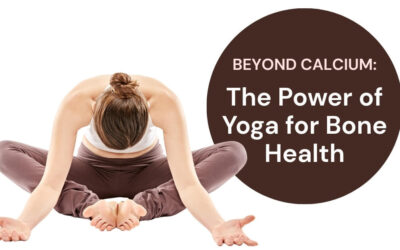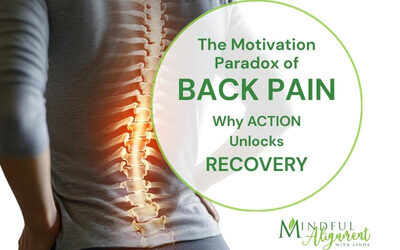Holistic Approaches to Prevent Knee Pain
Causes of Chronic Knee Pain
Chronic knee pain affects millions of people of all ages and backgrounds. Whether it’s due to injury, overuse, or underlying conditions like arthritis, finding ways to prevent knee pain is crucial for maintaining an active and healthy lifestyle. While exercise plays a pivotal role in strengthening the muscles around the knee joint, adopting a holistic approach that encompasses various lifestyle factors can offer comprehensive prevention and management strategies.
Strategies for Preventing Knee Pain
Regular exercise is essential for keeping the muscles around the knee joint strong and flexible. However, choosing activities that are gentle on the knees is crucial while effectively building strength and stability.
Here are some exercises to consider:
Low-Impact Cardio: Activities such as swimming, cycling, and using an elliptical machine provide excellent cardiovascular benefits without putting excessive stress on the knees.
Strength Training: Focus on exercises that target the muscles surrounding the knees, including the quadriceps, hamstrings, and calves. Leg presses, squats, lunges, and calf raises effectively build strength and stability.
Balance and Stability Exercises: Incorporate exercises that improve balance and proprioception, such as single-leg stands, balance boards, and stability ball exercises. These help enhance joint awareness and reduce the risk of falls and injuries.
Stretching and Flexibility: Incorporate stretching exercises into your routine to maintain flexibility in the muscles and tendons around the knee joint. Aim for stretches that target the quadriceps, hamstrings, calves, and IT band.
Yoga offers a holistic approach to strengthening the knees while improving flexibility and balance.
Incorporating the following yoga poses into your routine can help enhance knee health:
Virabhadrasana (Warrior Pose 1): This pose strengthens the quadriceps, hamstrings, and glutes while improving balance and stability. To perform, step one foot back into a lunge position with the toes turned out, keeping the front knee directly over the ankle. Extend your arms overhead and hold for several breaths before switching sides.
Trikonasana (Triangle Pose): Triangle pose stretches the hamstrings, calves, and hips while strengthening the muscles around the knees. Stand with your feet wide apart, the front foot faces the short end of the mat. The back foot is turned out facing the long edge of the mat. Extend your arms parallel to the floor. The front arm slides down the front leg while the back arm reaches up to the sky. Both legs remain straight. Hold the pose for a few breaths before switching sides.
Utkatasana (Chair Pose): Chair pose strengthens the quadriceps, glutes, and core muscles while improving balance and stability. Begin by standing with your feet hip distance apart, bend your knees, and lower your hips as if sitting back in a chair. Extend your arms overhead and hold the pose for several breaths.
Beyond exercise and yoga, several holistic approaches can complement your efforts in preventing knee pain and promoting overall joint health:
Wearing supportive and well-fitted shoes can help distribute weight evenly and reduce the impact on the knees during physical activities.
Certain supplements, such as glucosamine, chondroitin, and omega-3 fatty acids, have been shown to support joint health and reduce inflammation. Consult with a healthcare professional before adding supplements to your regimen.
Staying hydrated is essential for maintaining the health of cartilage and other joint tissues. Additionally, a diet rich in anti-inflammatory foods, such as fruits, vegetables, nuts, and fatty fish, can help reduce inflammation and support overall joint function.
Allow your body adequate time to rest and recover between exercise sessions. Overtraining can lead to muscle imbalances and an increased risk of injury, so listen to your body’s signals and adjust your activity level accordingly.
In addition to exploring natural remedies and alternative therapies, adopting healthy lifestyle habits and making simple adjustments to daily activities can also contribute to preventing and managing knee pain.
Here are some suggestions:
Poor posture can place unnecessary knee stress and contribute to musculoskeletal imbalances. Practice proper posture by aligning the ears, shoulders, and hips while standing and sitting. Engage the core muscles to support the spine and relieve knee pressure.
Sitting for extended periods can lead to tightness and stiffness in the muscles surrounding the knees. Take regular breaks to stand, stretch, and walk around to improve circulation and reduce joint strain. Consider using a standing desk or ergonomic chair to promote better posture and joint health.
Regular exercise is essential for maintaining joint mobility, strength, and flexibility. Incorporate low-impact activities such as walking, swimming, or cycling into your routine to strengthen the muscles around the knees without putting excessive strain on the joints.
Wear supportive footwear with cushioning and shock absorption to reduce impact on the knees during physical activity. Avoid high heels or shoes with inadequate arch support, as they can alter gait mechanics and increase knee stress.
Knee pain can have far-reaching effects beyond the immediate joint, impacting other areas of the body in several ways
When experiencing knee pain, individuals may unconsciously alter their gait or posture to alleviate discomfort. This can lead to overuse injuries in other joints, such as the hips or lower back.
Chronic knee pain can result in muscle atrophy and weakness in the surrounding muscles, further exacerbating joint instability and increasing the risk of injury.
Persistent knee pain can limit mobility and independence, affecting one’s ability to perform daily activities and participate in recreational pursuits. The risk of falling increases, especially when the feet skim the ground while walking.
Preventing knee pain requires a multifaceted approach encompassing exercise, yoga, lifestyle modifications, and holistic practices. By incorporating low-impact exercises and yoga poses for knee strength and flexibility, adopting mindful movement practices, and incorporating holistic tips into your daily routine, you can promote long-term joint health and reduce the risk of pain and injury.
Bottom Line: You can enjoy an active and pain-free lifestyle for years by prioritizing knee health and adopting holistic strategies.
Here are a few videos to help guide you on your health and wellness journey:
Are you tired of living with pain?
Are your activities and daily choices determined by your level of pain?
Are you ready to change your life for the better and gain back your physical freedom?
My unique and custom designed approach comes from years of training, education and experience. Together, we will get you back to living pain free and enjoying life.
Sign up for a private session today
It’s never too late to try something new.

Related Articles:
Beyond Calcium: The Power of Yoga for Bone Health
Discover how yoga supports bone health and osteoporosis prevention. Learn science-backed poses that strengthen your skeleton and reduce fracture risk.
The Motivation Paradox: Action is the Catalyst for Healing Back Pain
Discover the Motivation Paradox of Back Pain—why waiting for motivation keeps you stuck and how action is the true catalyst for healing. Learn science-backed strategies to break the pain cycle and reclaim mobility.
Transform Back Pain Anxiety: From Uncertainty to Empowerment
Discover how to navigate pain anxiety with empowerment. Embrace uncertainty and reclaim your healing journey through mindfulness and resilience.
Transforming Your Relationship with Back Pain: A Mindset Revolution
Back pain is more than a physical challenge—it's a profound psychological journey. The real battle isn't just in your muscles and joints, but in your mind. Your thoughts can either be a prison or a pathway to healing. Reframing Your Inner Narrative When chronic pain...




